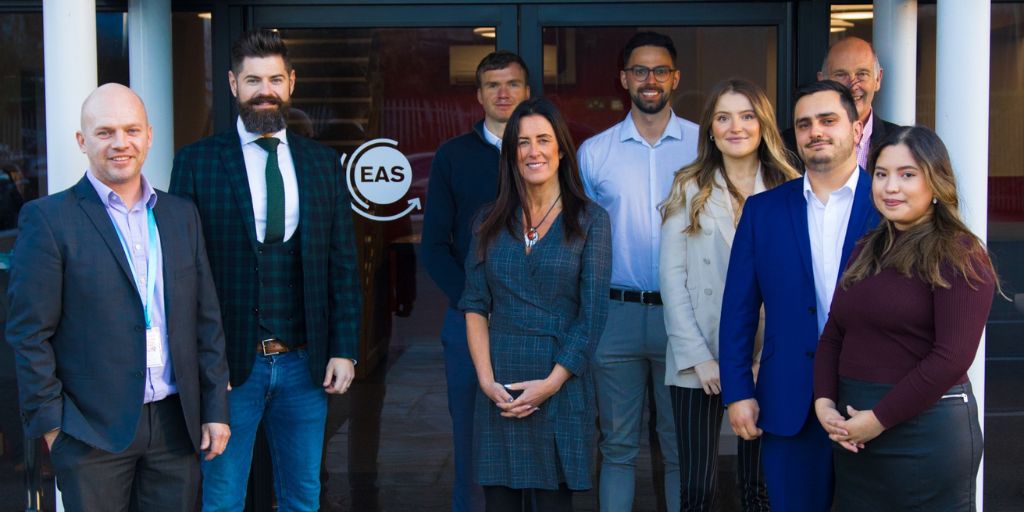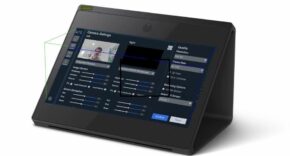
Endpoint Automation Services Ltd (EAS), Winner of Best Use of Robotics in Healthcare in the Health Tech Digital Awards 2022 has been widely recognised for its introduction of pioneering software automation into the NHS clearing backlogs, accelerating data processing, reducing wait times, and cut processing time from 45 minutes to 5 minutes.
One such example of this in action is the award-winning support it is providing for NEP.
The decision by NEP, the largest not-for-profit consortium working with NHS organisations in England, to enlist the services of EAS to introduce Robotic Process Automation (RPA) means that NEP clients are now receiving a more efficient/faster service.
NEP, provides the only true cloud-based ERP platform, shared by NHS Organisations across England, supporting the NHS national initiatives of digitalisation in the NHS.
To ensure accurate/consistent data across the solution, it is important that NEP maintains standing data, as it is shared across the solution to all NEP’s clients. Therefore, a key task for NEP is to add new suppliers to the main database. The challenge was that each request is manually-processed, in a standardised format to NEP’s central cloud-based database. The information is presented in a format which can be accessed quickly/easily by each client’s procurement teams so they can raise purchase orders for goods/services for hospitals.
When Covid-19 hit with unprecedented pressures on the NHS, the need to add new suppliers significantly increased. NEP would upload to the database 700 supplier requests a month, a figure which increased massively at the start of the pandemic.
With NEP’s Service level agreements (SLA) requiring the completion of new requests within three hours, an influx of new requests caused by the pandemic placed an enormous amount of pressure on NEP.
There were also further challenges for NEP following implementation of three NHS Organisations, who required further support. This, combined with the increase in requests due to the pandemic, showed an increase in workload for this task by 21%.
- EAS supporting NEP in delivering under pressure
Craig Alderson, NEP’s Head of Applications, said: “With our consortium members at the forefront of the pandemic response, we needed a robust response. By managing our support function on a 24/7 basis and combining staff availability and delivery meant that with some extraordinary efforts we delivered to our SLAs.
“We realised quickly, that we needed to review how our processes improve to deliver at the same levels without the intense pressure we had experienced. We also needed a cost-effective solution with a strong business-case to justify any investment to solve the issue.
“Having previously looked at RPA, it was agreed, this might provide a solution to the time-consuming process of manually inputting data to register new suppliers: “We knew about the advantages robots can bring which until this point had always been a ‘nice to have’.
“Our recent experiences meant considering whether there could be a role for a robot in the business. If it could improve efficiencies, those cost savings could be passed on to our consortium members and that feeds straight back as more money for patient care.
“As a not-for-profit business we are also a lean organisation so RPA could maximise our resources and free-up staff from the repetitive time-consuming tasks while making their jobs more professionally/personally fulfilling. This could allow us also to improve and develop the business while enhancing skills we have with the organisation.”
“RPA’s benefits for us saw a system being developed which would pay for itself in around nine months so then we spoke then with our partner EAS and it quickly became apparent that they understood our needs. Together we agreed to test an RPA process to transfer the supplier information onto our database to understand how the technology could work for NEP,” added Craig.
- Structured plan and collaborative partnership
EAS created an initial project plan and considered how, if successful, the technology could be scaled up quickly to provide more resource in dealing with the continuing pandemic pressures.
As project lead, Craig welcomed EAS’s approach which included a fixed-price contract giving the not-for-profit organisation certainty in terms of cost of investment. As part of the offering, EAS assigned a dedicated technical developer to lead the implementation as NEP at this time, had no in-house robotic skills.
Craig commented: “As a consortium, working in partnership is important to us. EAS quickly understood our ethos putting forward a structured implementation programme which gave us the collaborative partnership we wanted. EAS’s support allowed our technical team to quickly gain the knowledge to develop the skills to feel comfortable in working with the robot.”
Internal communication about what the robot’s introduction means to those affected was important for NEP. The rationale of moving to RPA and the opportunities this provided were clear. Freeing up staff time to engage in more value-added activities would make their role more enjoyable while also offering a clear focus on personal and professional development.
- EAS facilitating an immediate performance boost for NEP
NEP quickly saw an immediate, positive impact from the robot’s introduction. Data entry became much more efficient/accurate.
The time saved in data processing meant that NEP has reduced the SLA in this area to a one-hour response time, allowing NHS partners a faster response time to meet the needs of their organisations.
Benefits have been seen in other areas of NEP. Staff have been freed to carry out other tasks/learn, adding value the consortium members in supporting NEP’s portfolio of services offered.
Craig is in no doubt that introducing RPA was the right decision: “The impact of this project has been significant. By automating a fundamental but mundane process means our response time is significantly improved and we have been able to increase the number of supplier requests by around 200 a month with no additional cost. This is benefitting the service we provide which ultimately makes us and our partners more efficient. This alone proves the business case.
“We now have increased confidence to bring in a full-time robotics expert in-house. This means NEP can implement additional enhancements and look at other areas of the business which can benefit.
The partnership we have with EAS has been the bedrock of our success: “EAS understood what we needed, and quickly identified how we could benefit, at a time when the NHS were under enormous pressure.”
For more information on EAS and how it can support your organisation, please visit https://easuk.co.uk/










